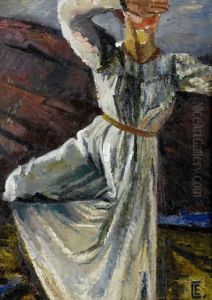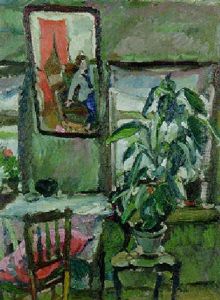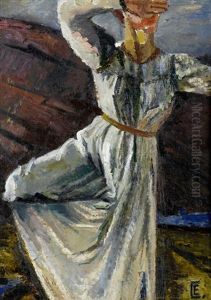Nina Yakovlevna Simonovich Efimova Paintings
Nina Yakovlevna Simonovich-Efimova, born in 1877, was a multifaceted Russian artist well-known for her contributions to puppetry, graphic design, and illustration. She lived through a period of great change in Russia, experiencing the twilight of the Russian Empire, the tumultuous era of the Russian Revolution, and the rise of the Soviet Union.
Nina began her artistic journey studying painting at the Moscow School of Painting, Sculpture and Architecture. Her education there laid the groundwork for her diverse artistic pursuits. She was married to the artist Dmitry Efimov, and together they were actively involved in the Russian avant-garde movement, a wave of modernist art that swept through Russia in the early 20th century.
Simonovich-Efimova's work was heavily influenced by Russian folklore and traditional artistic practices. However, she was also open to Western influences and the modernist tendencies of her time. This blend of tradition and modernity became a hallmark of her style. She was particularly passionate about puppetry and became a pioneer in the field. Her dedication to puppet theater was not just as a form of entertainment but also as an educational tool and an art form in its own right. She designed and created intricate puppets and sets, and her work contributed significantly to the development of puppetry as a serious art form in Russia.
In addition to her work with puppets, Simonovich-Efimova was an accomplished graphic artist and illustrator. She created illustrations for children's books and various publications, which were acclaimed for their artistic quality and unique style. Her illustrations often depicted scenes from Russian fairy tales and legends, bringing these stories to life with a vivid imagination and a strong sense of design.
Nina Yakovlevna's career was marked by innovation and a dedication to her craft, and she became a respected figure in the Russian art world. Her work in puppetry, in particular, left a lasting legacy, and she is remembered for elevating the art form and inspiring future generations of puppeteers and visual artists. She passed away in 1948, leaving behind a body of work that continues to be celebrated for its creativity and its contribution to both Russian culture and the broader world of art.


